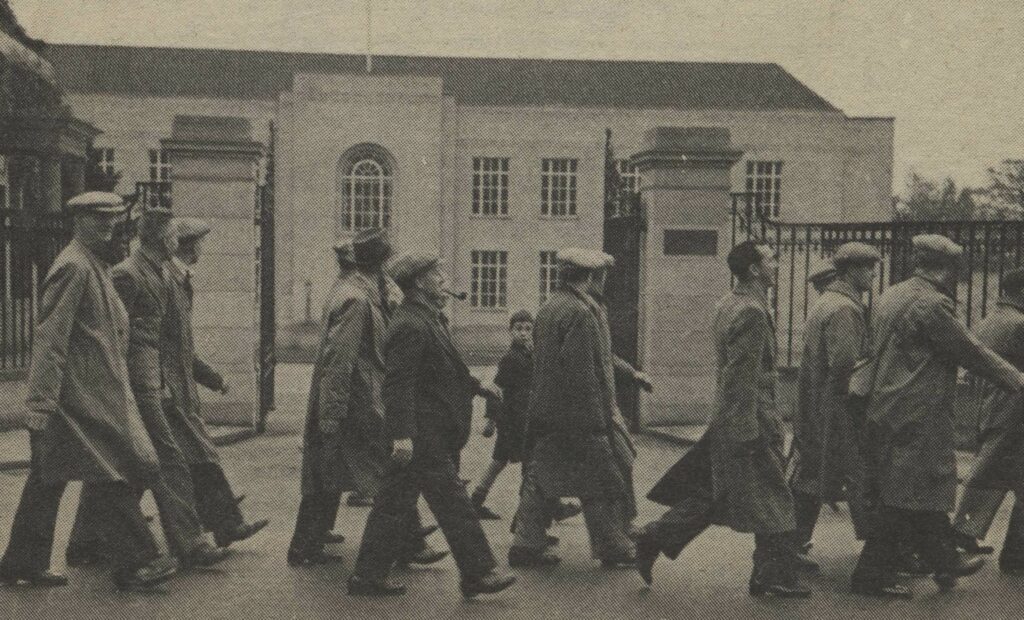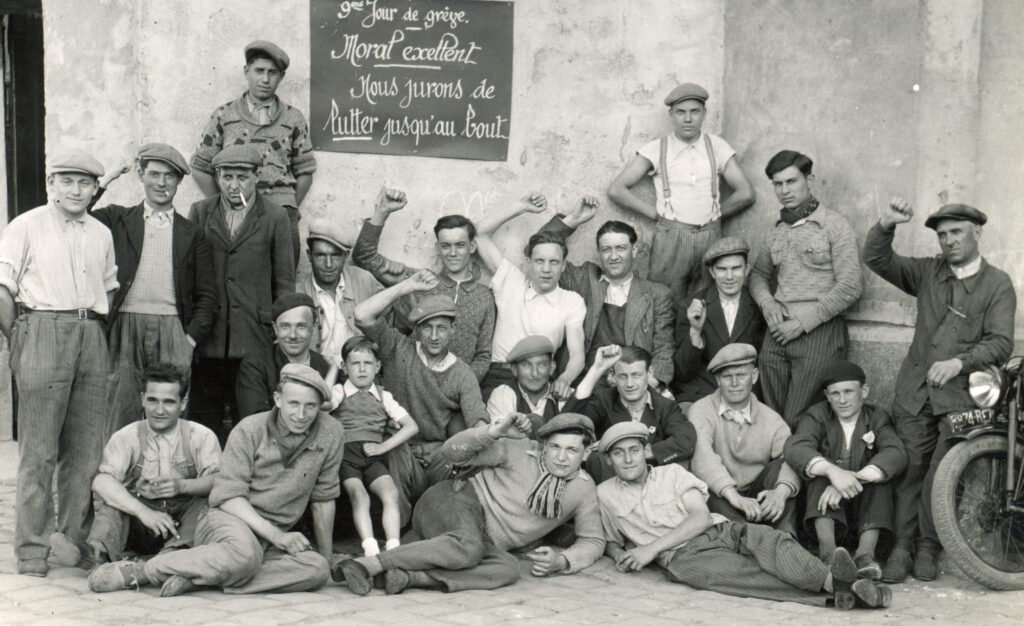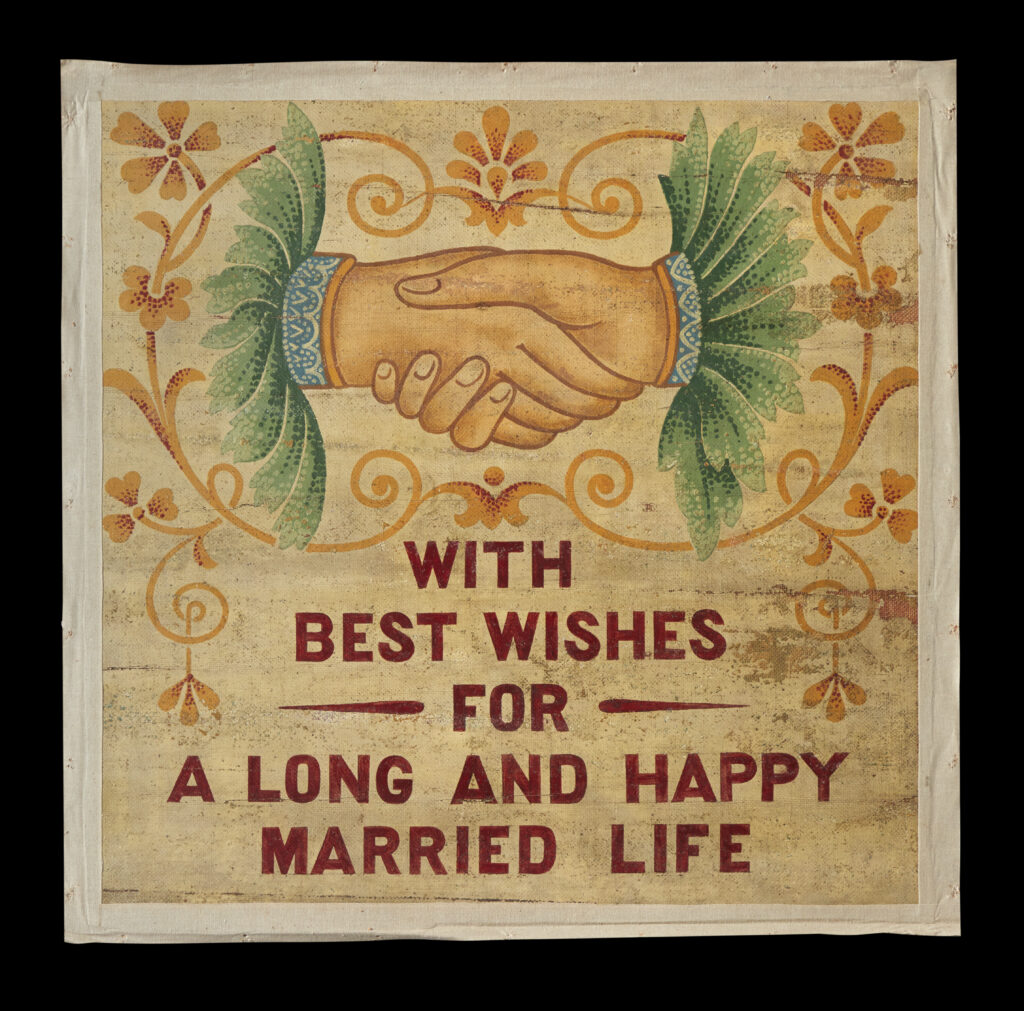In the 19th century, the people of Staten Island seemed to have had a liking for names which were simultaneously on-the-nose and industrial. The establishment of a major manufacturing plant in 1819 gave its name to the town of ‘Factoryville’, nearby quarries to ‘Graniteville’, and the Kreischer brick works to ‘Kreischerville’. It is perhaps therefore little surprise that, when the American Linoleum Company began production in 1875, the town which grew around the factory became known as Linoleumville.
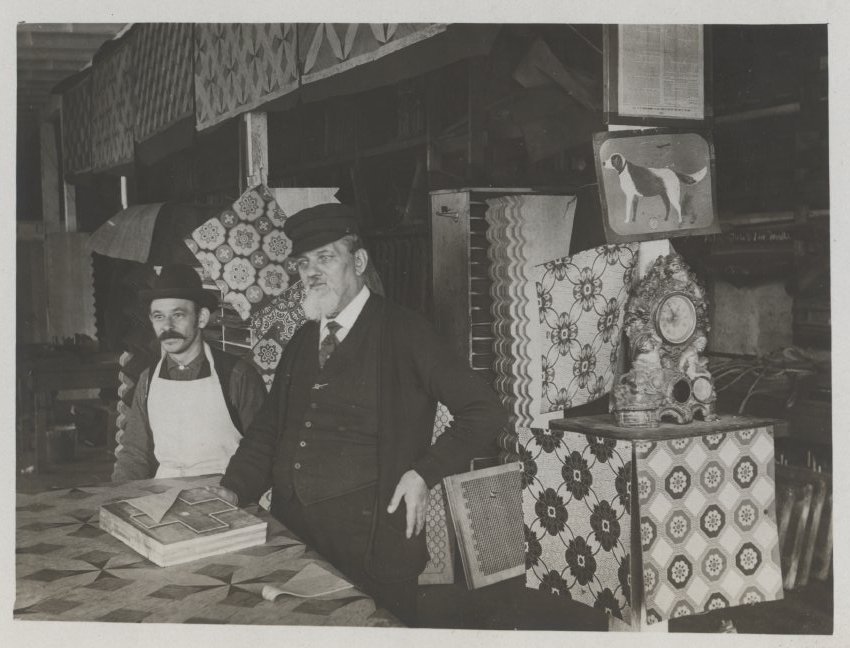
This photograph shows two men standing in a shop in Linoleumville, c.1900. It is brimming with patterned linoleum, and an example of a linoleum ‘mosaic’ (like this one in our collections) is visible to the right. Image from the collection of Historic Richmond Town.
The American Linoleum Company had been formed in 1873 by two Yorkshiremen – John Crossley and Frederick Walton. Crossley was an MP and carpet manufacturer, who saw the promise of manufacturing floorcoverings in North America to consumers who were currently ordering products from British firms. By removing shipping costs, the American Linoleum Company would be able to offer a cheaper rate than their competitors on the east of the Atlantic, and dominate a ready-made market.
However, this market was for linoleum, rather than carpet. That was where Walton – the inventor of linoleum – came in. Walton had had mixed success with this new material in the United Kingdom. Linoleum had proved wildly popular, but Walton lost control of his invention by failing to trademark its brand name; it was due to this lapse that Kirkcaldy firm Michael Nairn and Company began making and selling the product. Nonetheless, Crossley viewed Walton’s knowledge of the product and manufacturing process as invaluable, and the latter set about preparing the Staten Island site for two years prior to beginning to production.
All this preparation paid off, and the Staten Island factory was initially extremely successful, so much so that it struggled to fulfil demand as orders from eager buyers poured in. In 1882, the factory became the first building in Staten Island to install electric lighting in order to allow for a night shift to maintain a busy production schedule. This enabled the business to continue to grow – in 1886 alone the plant produced over 1 million square metres of linoleum.
In that same year, Michael Nairn and Company Of Kirkcaldy chose to join the booming American market, and opened a factory in Kearney, New Jersey. Nairn’s products were similarly in demand, but the New Jersey site was less than a quarter of the size of the Linoleumville works – perhaps this was why Kearney kept its name, despite some dubbing the town the ‘linoleum capital of the world’.
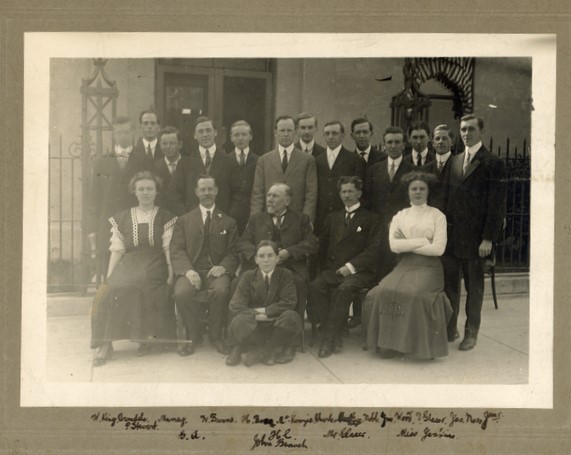
Office staff of the Nairn’s factory in Kearney, New Jersey. KIRMG:1983.0597.
The huge scale of production in Linoleumville meant that the American Linoleum Company works soon became a key employer in the area. The town that had sprung up beside the factory continued to grow as business boomed. The industry attracted European immigrants, predominantly from England and Poland. By the turn of the 20th century, approximately 700 people were employed at the factory – approximately half the town’s population.
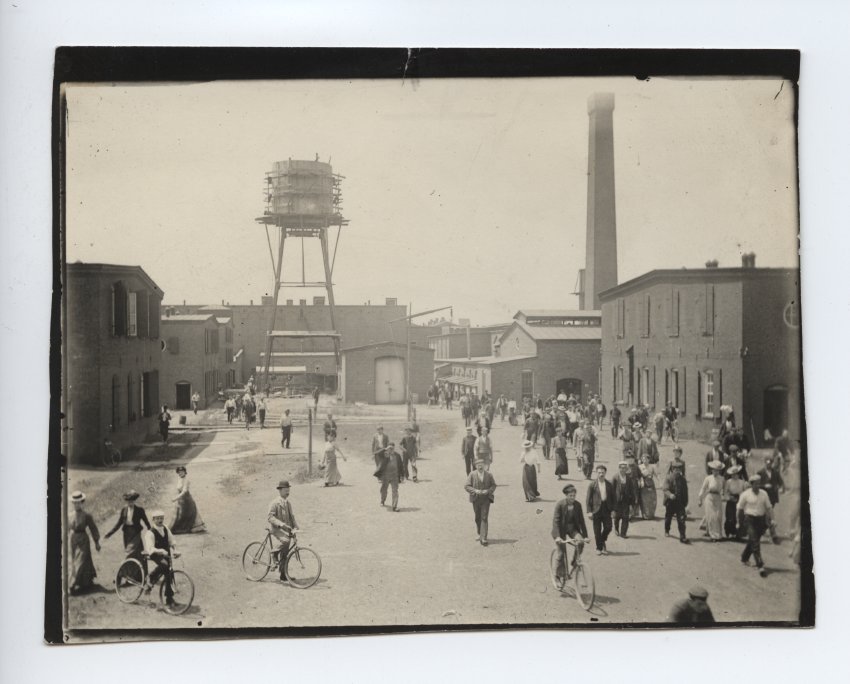
This photograph by Willard D Decker shows the factory at 12 noon, c.1900. The high brick chimney to the right was a feature of many linoleum factories – the chimney of the St John’s Works in Falkland stood above the town for decades before it was demolished in 2017. Image from the collection of Historic Richmond Town.
Without linoleum, it is possible that few if any of these workers and their families would have settled in the area. Far from being merely the product which gave the town its name, linoleum was the reason for Linoleumville’s very existence – and its continuing survival.
However, by the late 1920s, the business had began to decline. In 1930, the factory closed, meaning that Linoleumville was now to be without its namesake for good.
The economic and emotional impact of the factory’s closure hit the townsfolk hard. When, in 1931, the townsfolk held a vote to change their towns name, the New York Times reported that only four “old timers” voted to keep Linoleumville, stating that it “had an honourable record”. Presumably, the rest of the town did not feel the same, and their home was shortly re-christened Travis after a Colonel who had been involved in the initial colonisation of the area.
_________
This blog was written by Lily Barnes, curator working on the linoleum project Flooring the World (2022-2024). Flooring the World is a two-year project exploring the history of the Fife linoleum industry. It is funded by the Esmée Fairbairn Collections Fund, which is run by the Museums Association, funding projects that develop collections to achieve social impact.
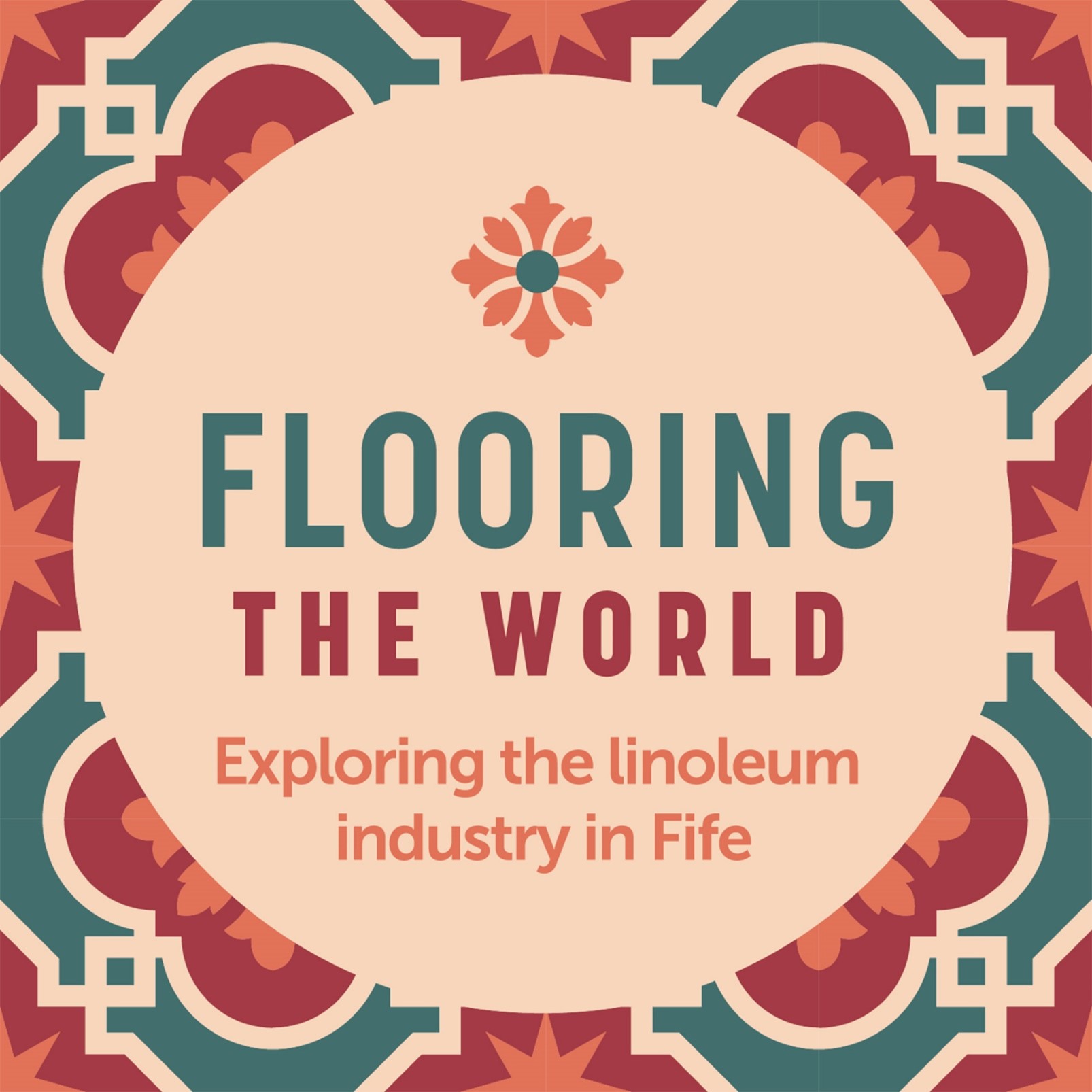

If you have any questions or information you’d like to share, you can get in touch at lino@onfife.com


